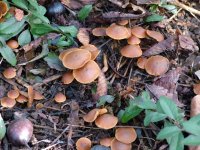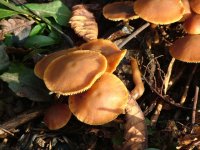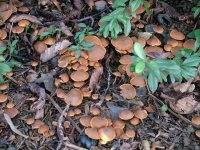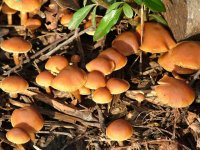black52bird
Registered User
Just out in the park this morning after 2 days of rain had relieved us of most of the snow, and the first sun for about 10 days appeared, and was amazed to find a huge colony of the enclosed fungus stretched along a shrubbery and in the adjacent grass, growing in clumps on twigs and other wood debris.
Initially I wondered if it might be Galerina (Pholiota) mutabilis, but it dried from the outside the the centre, and doesn't really seem to have enough scales on the flattish stipe. I am rather leaning towards Tubaria furfuracea at present.
The caps are 3.5 cm across and the stipe is about 4 cm long in a fully grown specimen.
Anyone got any suggestions.
Best
David
Initially I wondered if it might be Galerina (Pholiota) mutabilis, but it dried from the outside the the centre, and doesn't really seem to have enough scales on the flattish stipe. I am rather leaning towards Tubaria furfuracea at present.
The caps are 3.5 cm across and the stipe is about 4 cm long in a fully grown specimen.
Anyone got any suggestions.
Best
David







